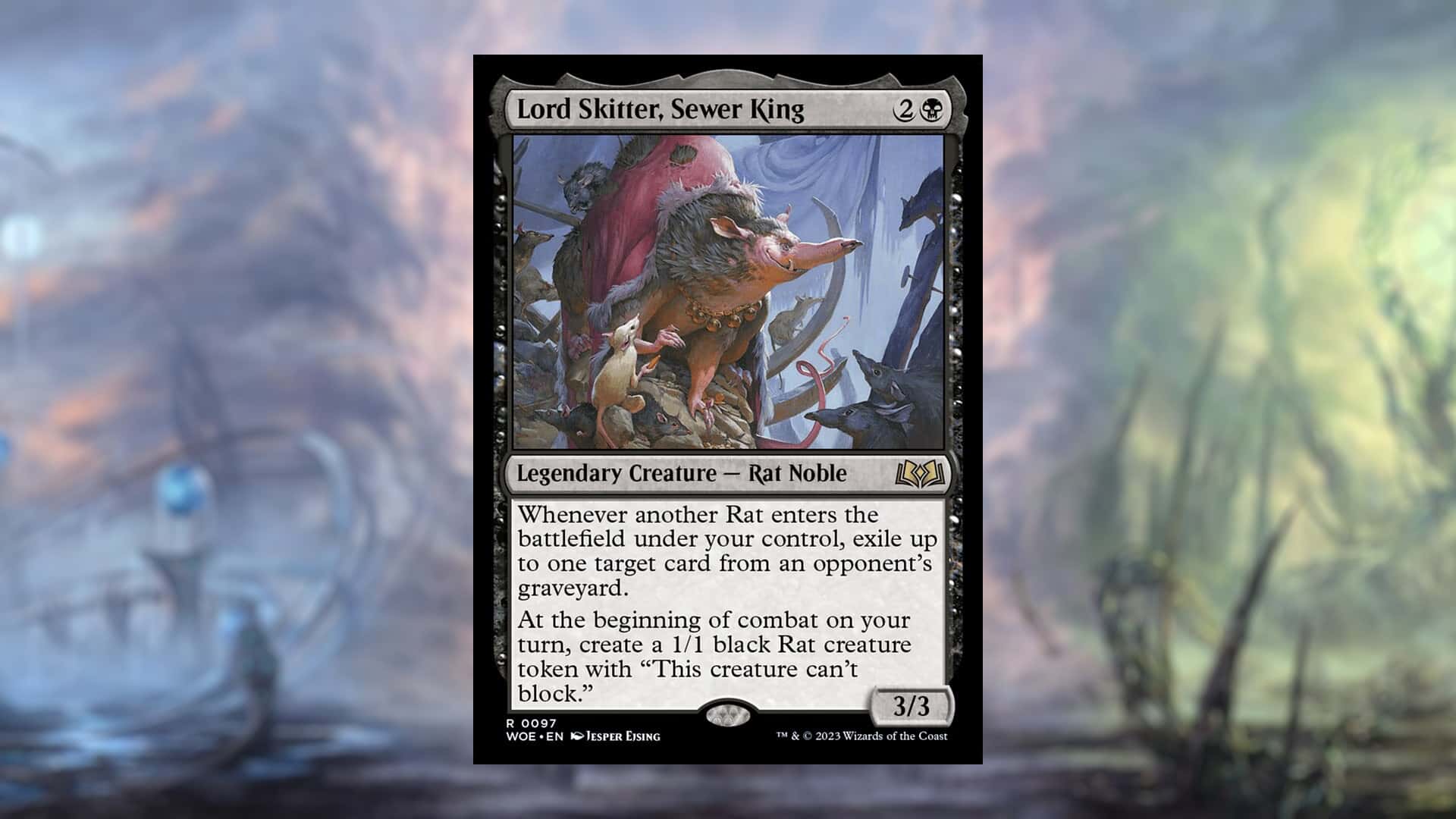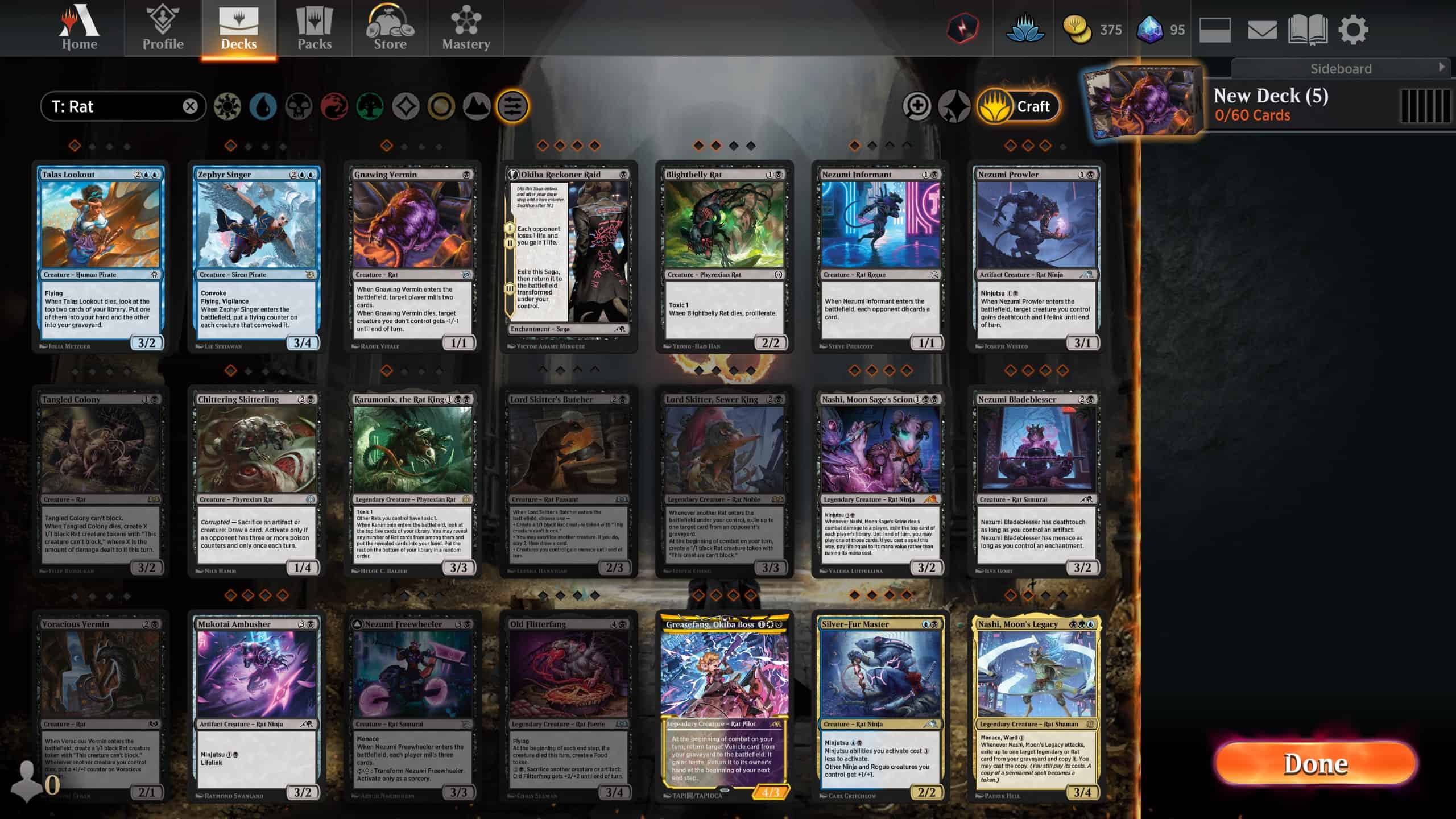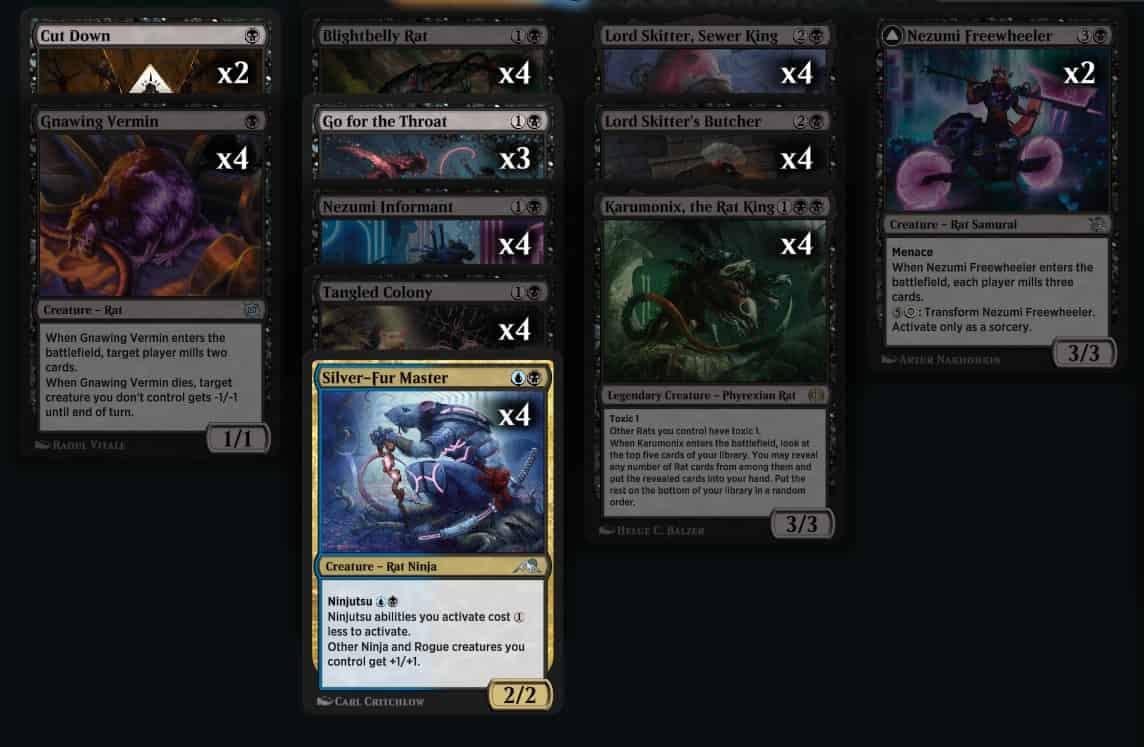Video Gamer is reader-supported. When you buy through links on our site, we may earn an affiliate commission. Prices subject to change. Learn more
If you’re getting into Magic: the Gathering, or any other card game for that matter, building decks is one of the necessary skills that any player will need to learn. It’s at the core of the game, but if you’re not experienced, it can be challenging. Well today, we’re going to go over how to build a deck in Magic: the Gathering.
We’re primarily going to focus on building a deck for 60 card constructed formats. If you’re looking for help with building a Commander deck, check out our how to build a Commander deck guide. We’re also going to focus on the process if you want to build your own deck from scratch. You can obviously look up decks online, and if you want to see some of the best decks that are on Magic Arena, check out our best MTG Arena decks guide.
How to build a deck in Magic: the Gathering Arena
First thing’s first, building your own deck is going to require having a knowledge of the cards that exist in the format you’re building for. MTG Arena is a great place to start with Standard as you can easily see all the cards that are in the format. For older formats, it’s a bit harder, but there’s plenty of online resources to help with that.
Let’s start with Standard since that has the smallest card pool. Now, if you’re just building a deck for casual Arena laddering or Friday Night Magic, a great place to start is picking a card that you like, and building around that. If you’re going to try and be a little more competitive with your deck, you’ll probably want to look up what kinds of decks are being played. This will help you make some well informed decisions about cards you’re going to play. That’s a bit of a bigger can of worms, so let’s focus on building a deck for a more casual setting.
Picking a card or playstyle

So we’re going to build a casual deck, and one of the more easy to build playstyles is an aggressive deck. For our example deck, we’re going to build a Rat aggro deck with Lord Skitter, Sewer Lord. Lord Skitter is a card that wants us to have a good number of rats in our deck. Rats are typically cheap and small creatures, so this lends itself to an aggressive deck. So what’s our first step?
Picking cards to go with your theme

We know that we want Rats, so let’s look up all the rat cards that we can find in Standard. As we can see by the picture above, there’s quite a few (discounting the two blue cards at the top). Now if we were to put four copies of each one of these into our deck, we’d run out of room pretty quickly. So let’s narrow things down.
We know that we want Lord Skitter in our deck, but what other strong Rats exist? The first thing that sticks out to me is Karumonix, the Rat King. It gives our other rats Toxic, and helps us find more rats to play. Alongside Karumonix, we have the Blightbelly Rat, which already has Toxic and lets us proliferate when it dies.
Another powerful card that sticks out to me is the Tangled Colony. It’s a very strong attacker, in that if it gets blocked and killed, we end up with a lot more rats in play. We also need a back up plan in case we can’t find Karumonix, and Silver-Fur Master is that plan. It gives our rats +1/+1, which is great to help speed up our damage.
Filling in the blanks

Now that we have a core set of cards for our deck, let’s fill in the rest. We probably want a few more rats. Gnawing Vermin is a good start because it can kill an early creature in combat with it’s death ability. Nezumi Informant is a good way to make our opponent discard cards. Lord SKitter’s Butcher is a versatile card that can give us another creature, give us some card draw, or give our creatures Menace, which can help us get damage through. Finally, Nezumi Freewheeler is our insurance policy. It’s a bit of a costlier card, but it can help us regain some board presence when we transform it.
That should be plenty of rats, so let’s look at ways to help us stay alive. Ultimately, a deck like this wants some removal, so we’re including two copies of Cut Down, and three copies of Go for the Throat. At the end, our deck looks something like the picture above.
Don’t forget the Lands
lastly, we want to make sure that we have the right lands to cast all our spells. Aggressive decks are going to want between 20 and 22 lands. We don’t have very many high cost spells so we don’t to draw too many of them. Midrange decks will want around 24-25 lands, and control decks want 26 lands, sometimes a little more.

For lands for our Rat deck, we want lands that are able to produce black mana, but also want some that can make blue as well. We have a handful of dual land options, as well as Secluded Courtyard, which can help cast all our creatures. We also have Takenuma and Otawara as utility lands. Takenuma lets us recur a creature from our graveyard, and Otwara is another removal land if we need it.
Now if you wanted to take this to Friday Night Magic, you might want to build a sideboard, which is 15 cards that you’d swap in and out between the games of your match. We might want cards like Duress, Pithing Needle and Shelodred’s Edict for control deck matches, Soul-Guide Lantern or Unlicensed Hearse and maybe Gix’s Command for other aggressive deck matches.
And that’s about it! No matter what kind of deck you’re building, you can use these principles to build out a fun deck for yourself. Again, if you’re planning on looking to be a bit more competitive, you’ll want to make decisions from these principles based on the metagame for your format, but all in all you should be just fine.
